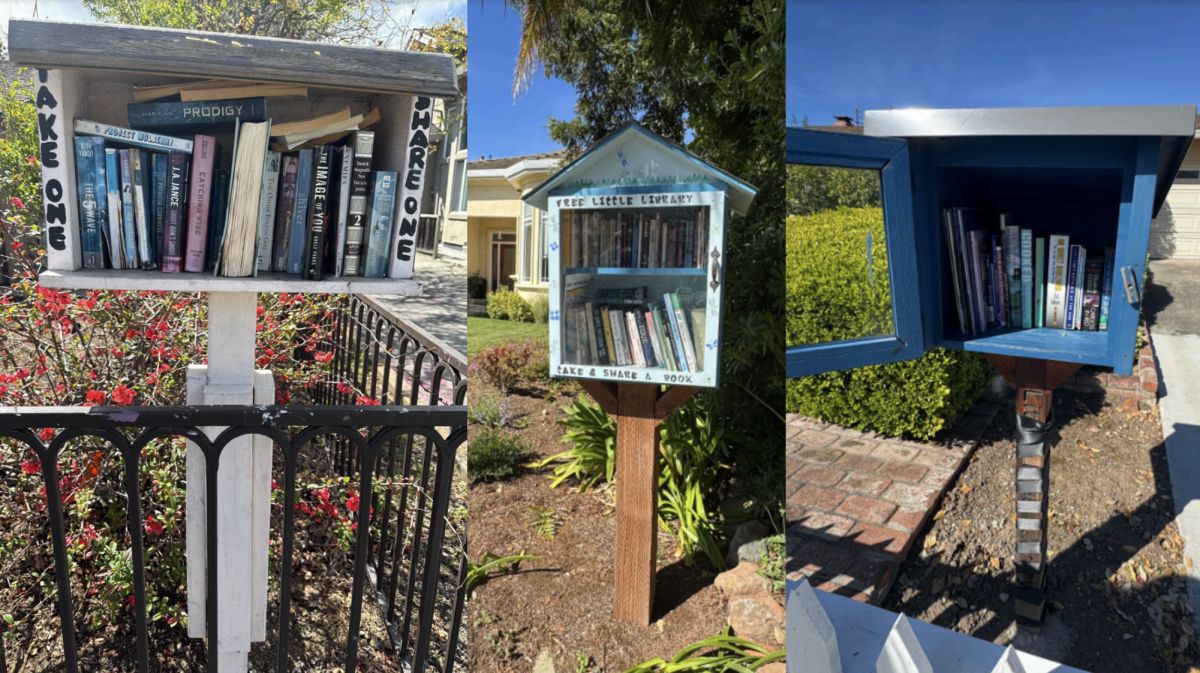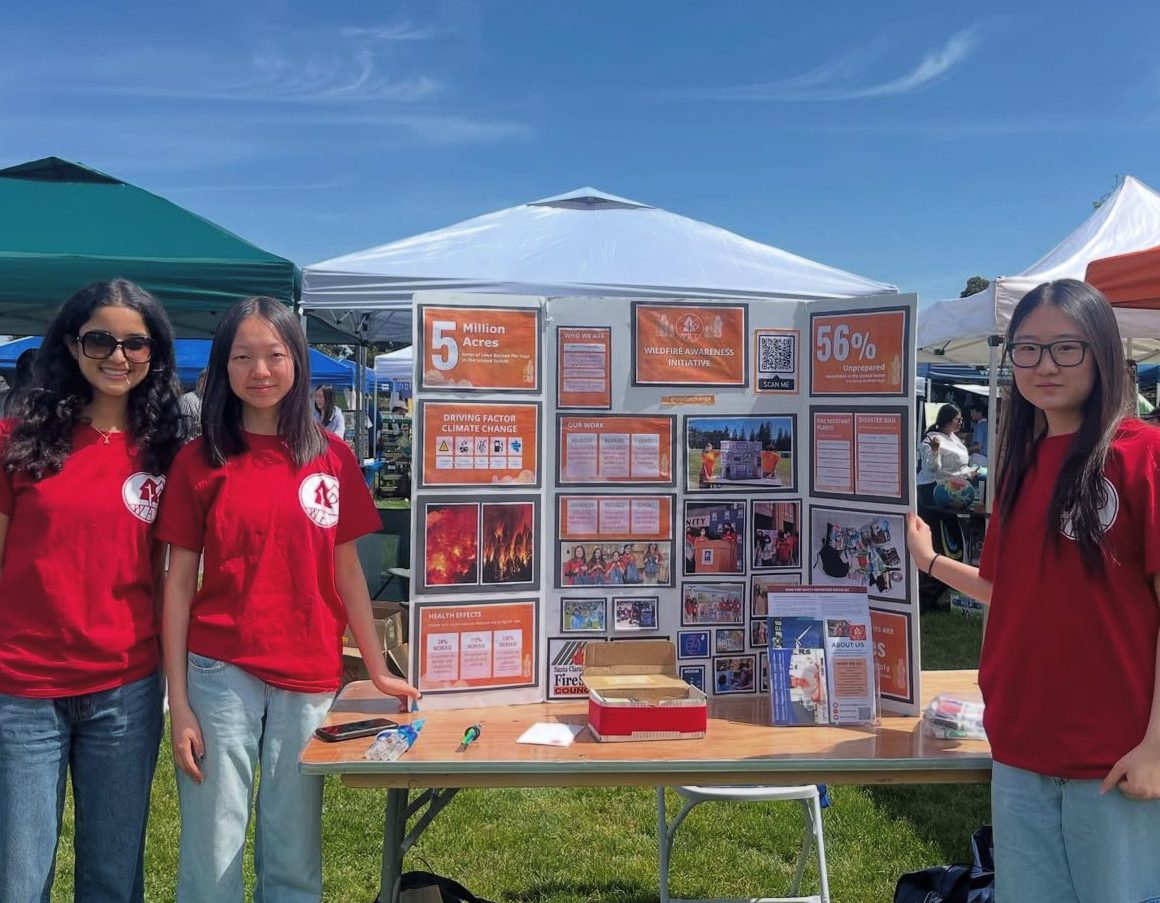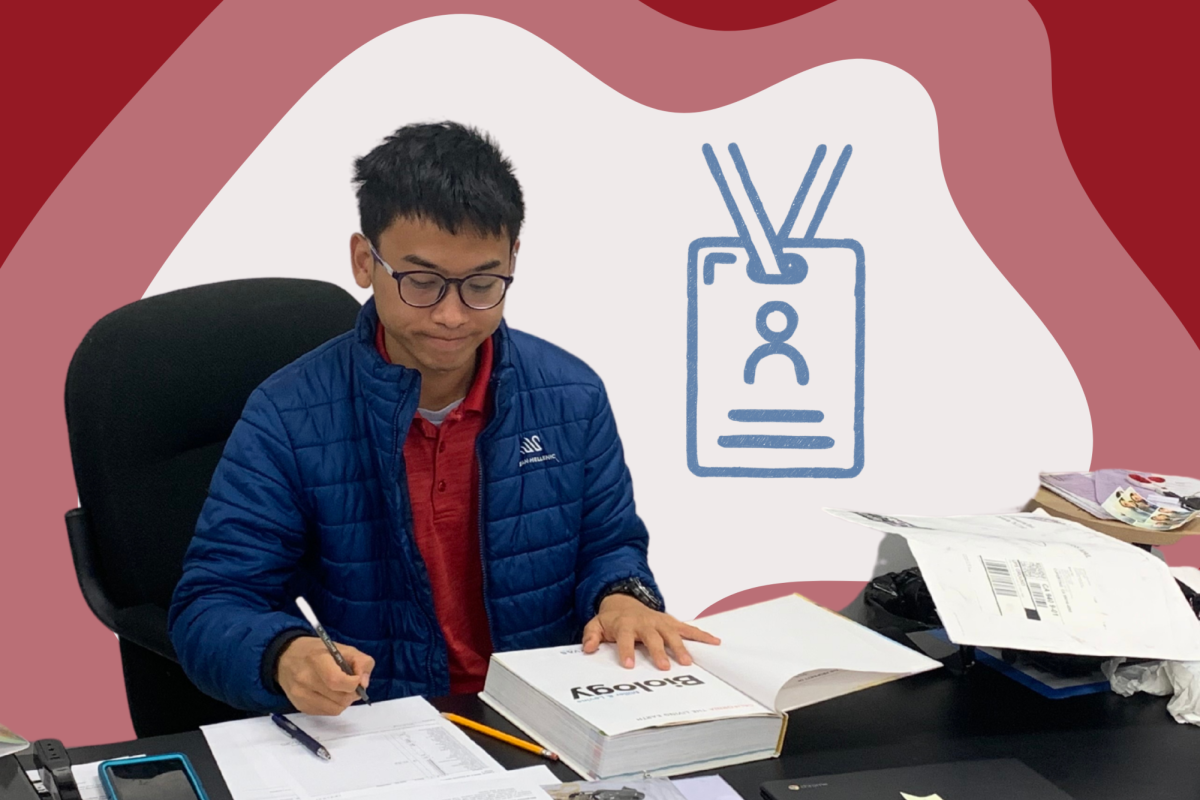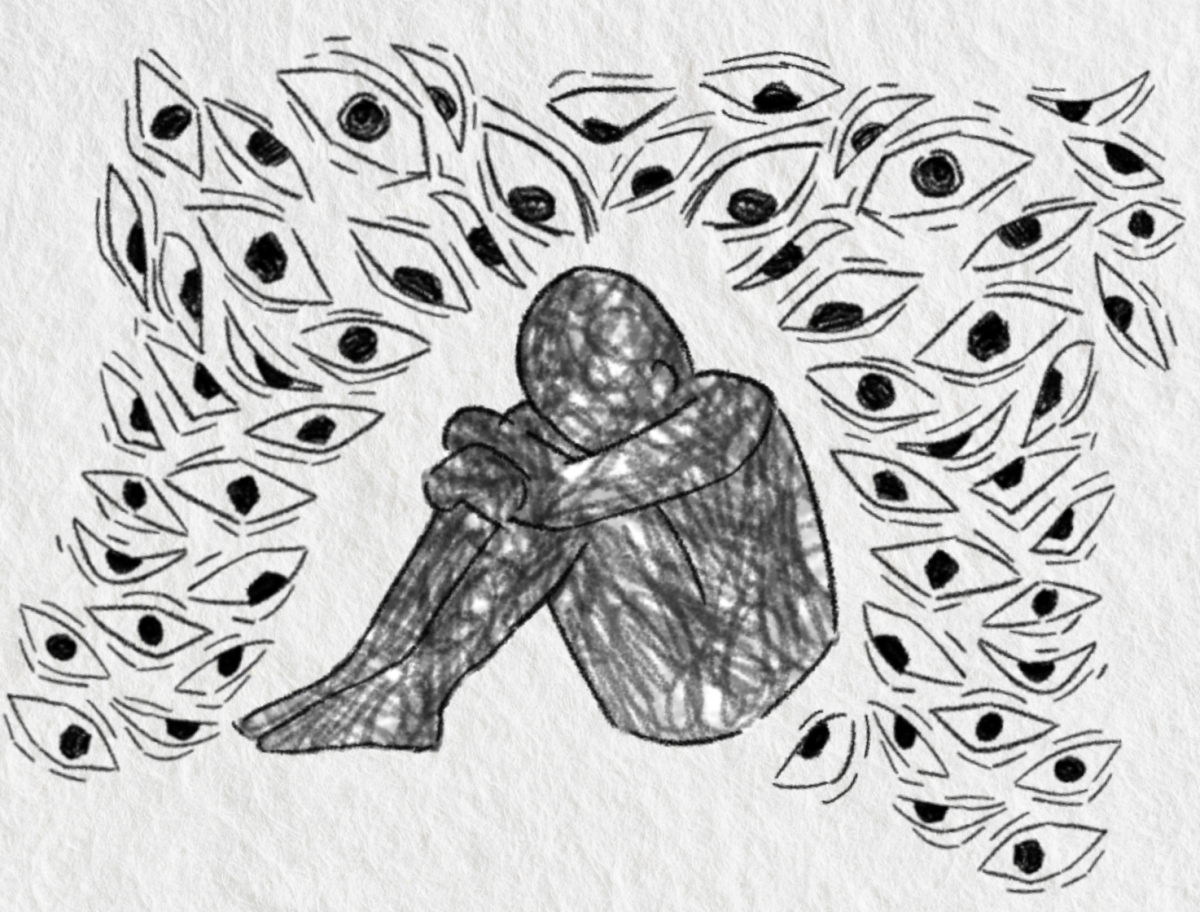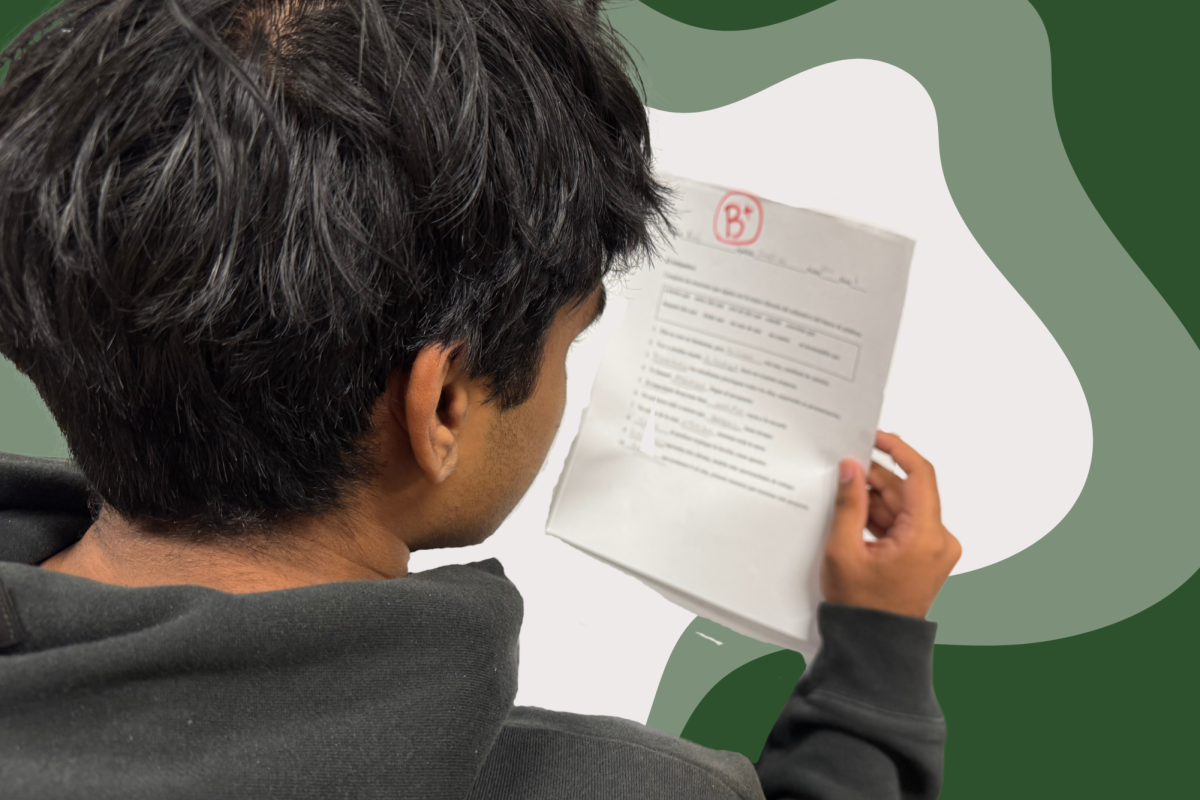Wiping the grime off his face, parent Bala Ramachandran grips his spade before attacking the dirt. The sweat drips off his muddy fingers, but Bala remains focused. After digging the 2-foot hole, Bala inserts the plywood base of the little library and pours in wet concrete to stabilize the newly constructed post. A wooden box was then put together using leftover supplies from home. Bala’s family, including junior Anika Ramachandran and her younger siblings used purple paint to decorate the box which Bala attached to the post. Filled with a plethora of diverse books for all ages, the Ramachandran’s little library sits outside their house attracting the attention of their neighbors.
Anika first discovered tiny libraries during quarantine on one of her many family walks, one of the few occasions they could leave their house. After noticing and indulging in tiny libraries throughout their neighborhood, Anika and her younger brother were inspired to create one of their own.
“We brought the idea up to our parents about having one of our own because we have a lot of books that none of us read anymore,” Anika said. “We wanted to give back to the community in that way.”
After researching their options, her family finally decided not to buy an official little free library kit. Instead, they chose to build and decorate their own little library as a way to save money and bond as a family. Bala dug a hole for the little library and built it using leftover plywood from a previous home construction project. Anika and her younger siblings painted the little library and wrote small messages to appeal to visitors.
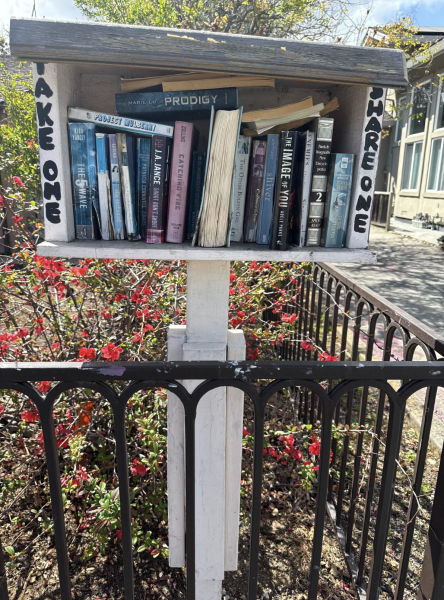
“The digging and the prep work for the little library are the most difficult parts because you have to figure out the right location and you have to dig really deep, around two feet, to make sure that the post is stabilized,” Bala said. “Otherwise, there’s always a danger that posts can break or get uprooted, and we didn’t want to have that happen.”
Although building the library was laborious, its impact on the community and their family life shows them it served a purpose. For Bala, the library serves as a conversation starter with his neighbors and helps him to build relationships with people outside his regular circle, strengthening the bond within his community.
“It has provided us connection points within the community because it has allowed us to connect with people of different ideologies and different geographical locations,” Bala said. “Usually, we would just connect with our neighbors and maybe some of my relatives who are close by. Now I know at least a couple of people who I wouldn’t ever have conversed with, so it anchors to a point of community connection.”
Often peeking out her bedroom window, Anika recalls moments when her neighbors were using and interacting with the library. These moments remind her of the library’s purpose — to give back to the community and reduce waste.
“There’s so much potential in recycling old books,” Anika said. “You don’t always have to go out and buy something. We were up in Santa Cruz last summer, and we were just driving through the neighborhood when we found a little library. We always stop to visit one when we see one. I found The Scarlet Letter there, which I’ve wanted to read for a while. You can find the most unexpected things in many libraries.”
While Sophomore Kaiyu Zhang agrees that the books found in tiny libraries can be unexpected, with the potential to open a whole new range of genres for a reader. Zhang often visits tiny libraries in her neighborhood, looking for new books to add to her collection. The excitement of discovering new books drives her to keep exploring.
“There’s always new books every time I go, and it’s really interesting to see what people put in there,” Zhang said. “That helps me discover new books and genres. Many of those books are old books or historical, so I’ve discovered that whole genre of books through those libraries.”
Bala has similarly attempted to include different genres of books within his family’s little library. From fantasy stories such as “Harry Potter and the Sorcerer’s Stone” to historical texts like Adolf Hitler’s manifesto “Mein Kampf”, Bala says these books help incite vital dialogue between people of different ideologies, enhancing the importance of educating oneself through books.
“If somebody is getting some value out of reading, then it’s all the better,” Bala said. “It’s now giving back to the community. It has books for everybody, and it’s allowing people to spread the joy of reading.”
Zhang’s own passion for reading has grown by reading the books she borrows from little libraries. According to Zhang, exposure to a variety of genres through little libraries allows her to pick more nuanced texts that create a deeper understanding of the books she reads. Moreover, she encourages her peers to explore the benefits of tiny libraries to improve their own reading journeys.
“The books I take from little libraries are 200 times more complicated and deeper than what I normally would pick out,” Zhang said. “That’s helped me grow as a reader. Next time when you go on a walk, remember there are good books for you inside the little libraries.”




